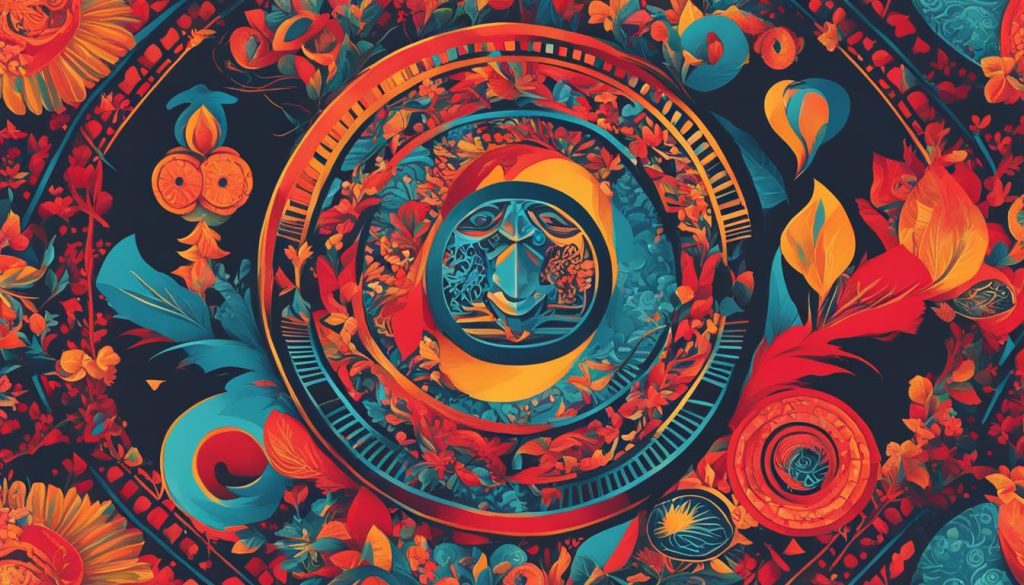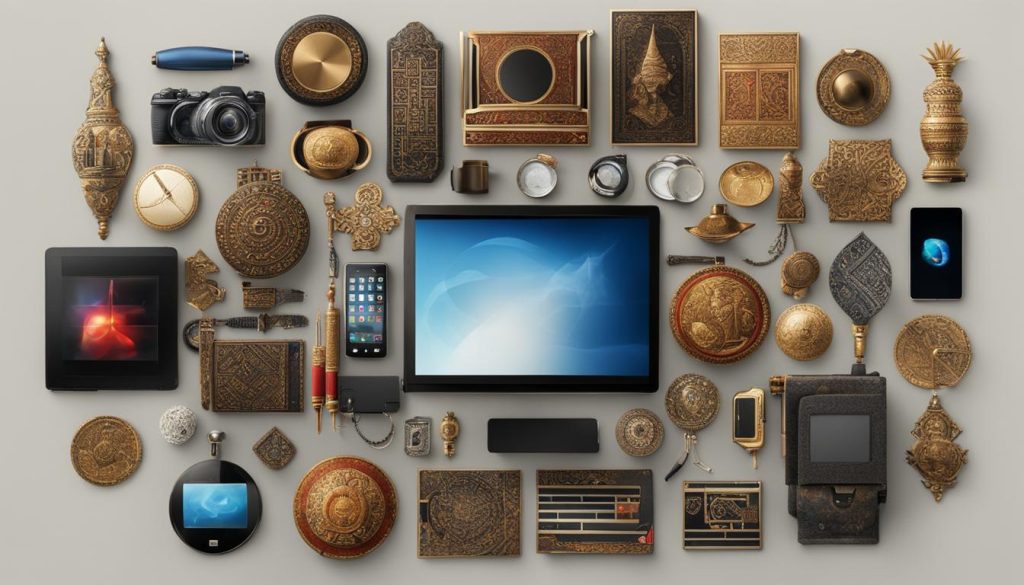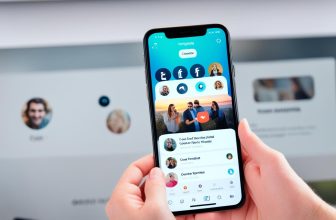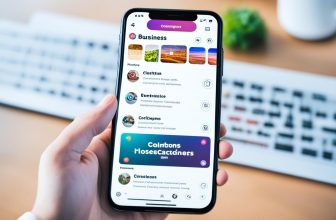Exploring the intricate web of how does media influence culture unveils its profound ability to shape our collective experience. As we delve into the realm of media’s influence on societal culture, we step into a digital landscape where cultural norms are not merely observed but actively formed. Social media, the juggernaut of modern connectivity, has fundamentally revolutionized our interactions, dramatically extending media’s role in shaping cultural identities. No longer confined by geography or tradition, platforms like Facebook, Twitter, and Instagram catalyze the exchange of diverse narratives and perspectives with unprecedented speed and scope.
This vast canopy of shared information not only broadcasts our daily lives but also presents a dynamic medium through which we witness media’s effect on cultural norms. As we navigate this ever-changing social terrain, we encounter the stories, images, and dialogues that permeate our communities, construct our realities, and inevitably influence the values we hold dear.
Key Takeaways
- Understanding the multifaceted ways in which social media platforms contribute to the formation and evolution of cultural norms and values.
- Recognizing the pivotal position media holds in fostering public discourse and shaping societal perspectives on critical cultural issues.
- Reflecting on media’s impact in challenging and potentially transforming traditional gender roles and intercultural communications.
- Acknowledging the participative nature of social networks in content creation and the negotiation of social acceptability in real-time.
- Examining the role that shared personal narratives play in combating stereotypes and spreading cultural understanding or, occasionally, misinformation.
- Assessing how the immediacy and breadth of social media influence our internalized social values and the collective consciousness of our society.
Understanding Social Media’s Role in Shaping Cultural Identities
The proliferation of social media has introduced a revolution in the way we construct and perceive our cultural identities. No longer are our social norms and self-conceptions shaped purely by our immediate communities or static media portrayals; rather, they are constantly being molded by the fluid and pervasive influence of mass media on culture. This continuous exchange of ideas and values across the web has charted a new trajectory for cultural evolution, one that is deeply intertwined with the technological advancements of our era.
The Formation of Cultural Identity in the Age of Social Media
Through the myriad interactions occurring on platforms like Facebook, Twitter, and Instagram, individuals are finding new ways to express themselves and connect with like-minded communities. It is this collaborative space where the role of media in shaping culture becomes evident, as personal experiences and individual expressions collectively contribute to a broader cultural narrative. User-generated content stands as both a reflection of and an influence upon our values, ideologies, and worldviews, which are, in turn, contributing to the tapestry of a dynamic, digital culture.
Case Study Insights: Social Broadcasts and Individual Perceptions
A telling example of the media’s impact on cultural trends can be seen in the UNESCO study based in Mexico, where social broadcasts reshaped perspectives on vitally important societal issues such as gender equality and domestic violence. The data underscores the notion that shared experiences on social media platforms can be more effective in altering perceptions than isolated media consumption, presenting a potent strategy for cultural change within communities.
Contrasting Traditional Media with Social Platforms
In the age of traditional media, information dissemination was a largely unidirectional process. Today, however, the interactive nature of social media platforms has facilitated a more participatory environment that enhances the influence of mass media on culture. Unlike their predecessors, these platforms enable real-time communication and collaboration, paving the way for more immediate and collective shaping of cultural phenomena.
| Attribute | Traditional Media | Social Media |
|---|---|---|
| Direction of Communication | Primarily Unidirectional | Bi-directional and Multi-directional |
| Speed of Information Dissemination | Linear Distribution | Instantaneous and Viral Spread |
| Role of Audience | Passive Consumers | Active Participants |
| Impact on Cultural Identity | Slow and Gradual Influence | Immediate and Continuous Shaping |
The digital era has truly redefined the architecture of our social fabric, woven intricately with the threads of instant communication and boundless connectivity. As we navigate this ever-changing landscape, it becomes increasingly critical to grasp the profound consequences that social media platforms hold over the formation of our cultural identities.
Media’s Impact on Cultural Trends and Self-Expression
The narrative of media’s impact on cultural beliefs and media’s effect on cultural norms is an ongoing conversation that has been amplified with the advent of social media. As virtual interactions eclipse traditional dialogues, these platforms serve as the new frontier for cultural exchange and self-expression. The ability to share stories, ideas, and content quickly and with a global audience has not only changed how we communicate but also has a profound effect on societal frameworks and individual identity.
Media channels have indeed become an indispensable partner in the progression of cultural trends. While they harbor the capability to challenge and redefine existing norms, they also wield power to construct new paradigms for how culture is both perceived and experienced. Undoubtedly, the influence of media resonates through the foundations of cultural evolution and the articulation of self within a society.

Below is an illustrative comparison that unveils the extent to which media has permeated daily life and reshaped the boundaries of cultural norms and self-expression.
| Aspect of Culture | Traditional Influence | Media Influence |
|---|---|---|
| Fashion trends | Influenced by local and regional trends | Global trends quickly disseminated through platforms like Instagram |
| Music | Determined by geographical origins and cultural heritage | Streaming services like Spotify creating global playlists that shape listening habits |
| Language | Evolved over centuries, influenced by societal shifts | Social media slang and memes contributing to the rapid evolution of language |
| Food culture | Defined by local produce and traditional recipes | Online recipes and cooking shows influencing global eating habits |
| Lifestyle choices | Shaped by community, family, and religion | Personal brands and influencers on social media impacting global lifestyle movements |
The exposure to such a diverse range of cultural expressions underscores the potential of media as a gateway to the world, thereby expanding the scope of what is considered ‘normal’ within a culture. It’s this unparalleled reach and instantaneous sharing feature of media platforms that continually molds the course of cultural beliefs and norms.
How Does Media Influence Culture: A Comprehensive Examination
In the contemporary digital landscape, the tapestry of cultural values and trends is intricately woven with the threads of media dissemination. The influence of media on culture is not only profound but multifaceted, shaping societal norms and individual behaviors through the relentless exchange of information over social platforms.

Dissecting the Processes of Cultural Influence via Social Media
The processes of cultural influence can be observed as a dynamic exchange on social media platforms. Here, the endless streaming of content empowers a new kind of cultural dialogue, where traditional beliefs meet modern norms, and collective consciousness evolves. At the heart of this evolution is a phenomenon known as “common knowledge”, a shared understanding that stimulates the acceptance of new cultural norms. When media propagates ideas that receive wide endorsement, it inadvertently sets the stage for these ideas to be woven into the fabric of cultural values.
Consider the emergence of global movements like #MeToo, which, through social media, galvanized discussions around gender inequality and empowered a collective voice demanding change. The immediacy and reach of platforms like Twitter and Instagram have allowed such movements to flourish, impacting cultural trends and altering the way society views and discusses sensitive topics.
Real-world Implications of Media’s Cultural Influence
The real-world implications of media’s influence on cultural values are extensive. Social media sites act as catalysts for change, empowering users to shift perceptions necessary for societal advancement. Profound changes have surfaced in how individuals express their self-esteem, engage in diversity, and participate in civil discourse, all under the supervision of social media. In recent times, we have witnessed grassroots campaigns that tackle social issues become viral, illustrating the potent capacity of media to reshape public opinion and fuel societal reforms.
Moreover, the dynamics between content creators and consumers have been revolutionously altered. The democratization of content on digital platforms has tipped the scales of content creation in favor of the average user, enabling a more diverse representation of cultural narratives and trends. This paradigm shift not only reflects media’s impact on cultural trends but also emphasizes its role in facilitating more inclusive and heterogeneous cultural expressions.
- Transcendence of geographical borders leading to global cultural exchanges
- Increased awareness of and sensitivity to diversity
- Realignment of power structures between media producers and consumers
The intricate interplay between media and culture continues to define and re-define our societal values and norms. As we delve deeper into this discourse, the transformative power of social media becomes increasingly apparent, shaping the cultural landscape with every post, tweet, and share.
Media’s Effect on Cultural Norms: Revolutions in Communication
The advent of digital communication has significantly altered the landscape of how cultures develop and interact. At the forefront of this revolution are social media platforms that have reshaped the way individuals and communities convey and modify cultural norms.
Community Dynamics and the Evolution of Norms
As the bedrock of cultural evolution, community dynamics have been transformed through the media’s role in shaping cultural identities. Historically, norms were transmitted through face-to-face interactions within tightly-knit communities. Yet, today’s media-driven environment has taken these exchanges to a virtual plane, enabling the cross-pollination of ideas and values at an unprecedented rate.
Globalization of Social Norms through Media Platforms
With the advent of instant global communication, social norms are no longer constrained by geography. Media platforms have enabled cultures, once separated by physical distance, to merge and influence one another, resulting in a new, global societal culture.
| Cultural Aspect | Traditional Influence | Media’s Modern Influence |
|---|---|---|
| Communication | Local and linear | Global and instantaneous |
| Norms | Region-specific | Transcultural hybridization |
| Identity Formation | Through direct community interaction | Through global engagement and exposure |
| Value Systems | Established by local customs | Shaped by diverse international input |
The matrix of influence has shifted, as the media plays an integral part in sculpting and disseminating these new norms. Our digital age has witnessed the creation of a collective consciousness, heavily swayed by the narratives presented through various media outlets. This provides a fertile ground for the rapid spread of societal transformations across the globe.
Analyzing the Shift in Cultural Values through Social Media Usage
The landscape of cultural values is ever-evolving, and in the digital age, the influence of mass media on culture is undeniable. As we delve into the transformative effects of social media, it’s clear that this platform is not just a mirror reflecting societal shifts but also a catalyst forging new cultural paradigms.
The Correlation Between Social Media Engagement and Value Transformation
Recent studies have shown a significant link between social media engagement and the transformation of cultural values. With each like, share, and comment, users are partaking in a digital dialogue, actively reshaping the cultural identity that defines their community. These platforms provide more than just a space for communication; they serve as a breeding ground for cultural evolution, where media’s influence on cultural values is ever-present.
Social Media’s Contribution to Cultural Value Shifts in Rural Areas
In rural regions, far from urban centers, social media has become a beacon of change. Community members can exchange ideas and gain insights into global trends, enabling the infusion of new perspectives into their traditional ways of life. This phenomenon has brought to light the profound influence of mass media on culture, particularly in areas that were once insulated from the rapid currents of change.
| Cultural Value | Pre-Social Media | Post-Social Media |
|---|---|---|
| Exchange of Ideas | Limited to local community | Global reach and influence |
| Gender Roles | Traditionally defined | Progressive dialogue |
| Community Participation | Constrained by proximity | Expanded through virtual networks |
| Education & Self-Learning | Access through formal institutions | Enhanced by online resources |
The conversation surrounding the interplay between social media and cultural values continues to grow as we recognize the platform’s potential not only for cultural representation but also for educational advancement and community engagement. Thus, acknowledging the reach and ramifications of social media on our cultural landscape is paramount for understanding the direction in which our societal values are headed.
Confronting the Dichotomy: Preservation and Change in Societal Culture
The role of media in shaping culture has introduced a paradox of simultaneous preservation and transformation within societies. Media’s undeniable impact on cultural norms is evident as it perpetuates a global narrative that influences the cultural practices and ideologies of diverse populations. Within this new reality, there is a clear dichotomy, creating societal tensions as communities seek to reconcile the rapid influx of new cultural phenomena while attempting to maintain their unique identities. As channels of information spread across the internet, the task of holding onto traditional practices becomes more intricate, illustrating the ever-evolving discourse on media and cultural preservation.
The essential balance requires an approach that embraces new cultural insights and reinforces the values and heritage that define national identity.
Media serves as a mirror reflecting societal shifts, yet it is also a map that guides us towards future possibilities. Its pervasive influence reaches into the depths of cultural tradition, sparking discourse and highlighting alternative perspectives. In many ways, the ability of media to engender a pluralistic cultural dimension is one of its greatest strengths. However, it puts at stake the authenticity and survival of longstanding cultural legacies, pressing societies to evaluate what should be carried forward and what may need to be reinterpreted or even left behind.
This dichotomy is not merely academic; it impacts real lives and communities. Here’s a representative breakdown:
| Media’s Role | Cultural Preservation | Cultural Change |
|---|---|---|
| Global Awareness | Promote traditional art and stories | Introduce new cultural practices |
| Community Participation | Encourage local engagement | Adapt to global societal trends |
| National Identity | Reinforce patriotic values | Blend multiple cultural identities |
| Cultural Pluralism | Respect for historical diversity | Inclusivity in shaping new norms |
Effectively navigating this complex landscape necessitates a multifaceted and inclusive approach. Key stakeholders, including policy makers, cultural institutions, and media creators, need to work collaboratively to stimulate dialogue that values both cultural innovation and heritage. The goal should be to cultivate a media-rich environment that honors the past while welcoming the new, thus ensuring a vibrant and evolving cultural tapestry.
- Media as an educator that clarifies and preserves cultural significance
- Platforms as stages for cultural celebration and critique
- Engagement of individuals in propagating their heritage and adopting novel practices
The dialogue between media proliferation and cultural steadfastness is not one to be silenced but rather amplified, as it embodies the heartbeat of societal progress and the soul of communal identity.
Conclusion
The exploration of media’s effect on cultural beliefs and its pervasive role in society offers a nuanced vista into the complexities of cultural evolution. Social media, with its ubiquitous reach and interactive essence, has emerged as a powerful architect in shaping cultural identities. These platforms have not only enabled a broadened scope of cultural expression but have also become ingrained in the development of modern value systems. The staggering rate at which media influences culture signals a shift in the dynamics of tradition, modernity, and communal ethos.
When considering the omnipresence of social media in our daily lives, comprehending its influence encompasses more than just acknowledging its existence. It requires a deep dive into the ways these technological conduits have challenged and transmuted the cultural fabric. The participatory experience that media provides serves as a double-edged sword, fostering diversity and innovation while simultaneously presenting the challenge of preserving cultural integrity amidst a tide of global influences.
As we venture further into the digital age, the intricate dance between media and culture will invariably continue to shape societal constructs and ideologies. The task ahead lies in striking a balance—an equilibrium that nurtures the growth of global cultural consciousness while cherishing the unique mosaic that is humanity’s heritage. Social media stands at the forefront of this cultural odyssey, undoubtedly influencing the tapestry of values and norms that will guide future generations.
FAQ
Social media influences cultural norms and values by facilitating the rapid and widespread exchange of information. These platforms enable individuals to share personal narratives, images, and viewpoints, which may either challenge historical stereotypes and promote cultural understanding or reinforce negative biases. The content shared on social media often reflects and can alter internalized social values, establishing new norms in real-time.
What is the role of media in shaping cultural identities?
Media plays a crucial role in shaping cultural identities by providing a space to share cultural experiences and events that represent a group’s common beliefs, ideas, and traditions. Personal and collective identities are expressed and memorialized on social media, encompassing various aspects such as race, gender, and social class. Media can spotlight issues that prompt communal discourse about identity and norms, leading to the evolution of culture.
Social broadcasts involve the communal consumption of media, where people view and discuss content together, often leading to a shared cultural experience that can have a stronger impact on perceptions compared to individual media consumption. For example, studies have shown that people who participate in social broadcasts may develop different views on issues such as domestic violence and gender equality than those who consume similar content alone.
Unlike traditional media, social platforms allow for immediate and interactive information dissemination, enabling a dynamic and continuous shaping of cultural norms and trends. Social media facilitates collective dialogues and provides a platform for immediate feedback and social engagement, unlike traditional forms of media that often involve a one-way communication flow, without real-time interaction.
What are the real-world implications of media’s cultural influence?
The cultural influence of media has real-world implications on behavior and societal opinions. For example, social media campaigns can challenge gender norms, encourage community participation in social causes, and create movements for change. The platforms also have the power to reshape values and expectations surrounding identity, diversity, inclusion, and other societal constructs.
How does media engagement correlate with shakes in cultural values?
Media engagement correlates with shifts in cultural values as individuals adopt behaviors and norms that are prevalent and validated on social platforms. Higher levels of social media usage have been linked with changes in cultural paradigm, such as how communities perceive gender roles or authority, and have affected the integration of individuals into broader cultural contexts.
Social media has contributed to cultural value shifts in rural areas by providing exposure to diverse viewpoints and lifestyles, which in turn fosters cultural exchange and encourages the integration of rural communities into the broader socio-cultural conversation. This can lead to transformation in perspectives on issues ranging from tradition to globalization.
How are modern societies confronting the dichotomy between cultural preservation and change?
Modern societies are confronting the dichotomy through dialogue and policy, balancing the influx of new cultural influences brought on by media with efforts to preserve traditional values and national identity. Communities are looking to harness the positive aspects of media—such as awareness building and community engagement—while also nurturing an appreciation for cultural heritage and pluralism.







